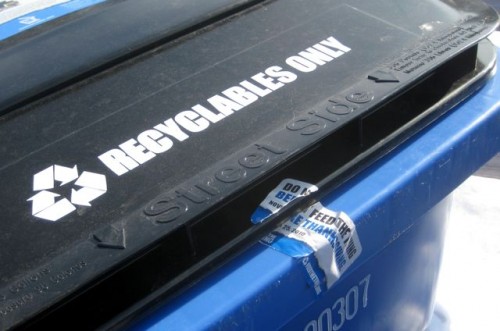People are bad at comparing risks, and people like to point this out by making comparisons to risks that people tolerate on a daily basis. For example, pointing out that many more people die in car accidents than are killed by terrorists, or pointing out that providing electricity by burning coal kills and injures more people than providing electricity by fissioning uranium.
At one level, I find these arguments compelling. I find it preposterous that we spend so much money on homeland security. That money would be much better spent (in terms of lives saved per dollar) on traffic safety, or probably a lot of other things. I gather, based on the fact that people keep pointing this out without producing any visible change in funding priorities, that most people don’t find this a compelling argument.
I’ve always wondered about that, and perhaps I’ve figured out why in the “coal versus nuclear” argument, which I don’t find compelling.
Plenty of people die to provide us with power from coal. Miners die from accidents. People die in road accidents moving coal from the mine to the power plant. Workers die in ordinary industrial accidents at power plants. People die from respiratory problems caused by or exacerbated by pollution from burning coal. People die in severe weather—which is becoming more common, probably because of global warming.
Except for that last, this is our baseline status. We know the costs and risks, and we accept them. Some people work to improve things—better mine safety, better level crossings for trains, lower emissions from coal burning—but the baseline is accepted. Importantly, an individual can do a lot to reduce his or her risk, such as by not making a career in coal mining, by exercising due care at rail crossings, and by living some place with clean air (and not smoking).
With nuclear power, things are different. The baseline status is safer. Deaths in uranium mining are very small, because the volume of uranium ore needed is so small compared to the volume of coal. Deaths from industrial accidents are small, because the number of workers is small (and, perhaps, because some additional attention is paid to safety at a nuclear plant for reasons having to do with greater regulation and particular concerns about public perceptions of safety). Deaths caused by the release of radiation are very, very small, because we go to vast effort and expense to avoid them.
But although the baseline status is relatively safe, the contingent risks are huge. The problems that led to the catastrophe we’re seeing now at the Fukushima Daiichi plants are replicated all over the world. It’s not just plants built on fault lines and plants built places where tsunamis can occur. It’s things like redundant safety systems that aren’t really redundant. Most especially, it’s committing to providing active safety over a period that’s much longer than human institutions reliably persist.
On the former issue, I have an oddly relevant memory. As a boy I attended public hearings in Kalamazoo on the licensing of the nuclear power plant at Palisades. At one hearing, a lawyer opposing licensing pointed out that a line carrying backup power for the plant ran through the same conduit as a line carrying the regular power. In some clever showmanship, he snapped a pencil in two to illustrate the fact that this produced a common point of failure. Learning that the backup generators at Fukushima were in basements where they would be lost in a tsunami produced an odd echo of that memory.
The latter issue is really more to the point. We are relying on corporations to actively manage the safety of these plants and the spent fuel—corporations that will cease to exist if the cost of this management burden ever grows to the point that it consumes the corporation’s profits.
I think the degree to which these safety issues needed to be actively managed has surprised a lot of people. I’ve many times heard people suggest that managing nuclear waste was no big deal—just put the stuff in a concrete vault and put a fence around it with signs saying “If you come in here you’ll probably die.” I always knew that was dumb, but I was mostly worried about people deliberately coming in to use the waste to make dirty bombs and the like. I didn’t quite realize to what an extent the spent fuel rods depended on a whole complex system of cooling equipment to keep them from bursting into flame and spreading radioactive smoke and steam wherever the wind blew.
So that, I think, is why we accept coal power and think of nuclear as dangerous. We could give up coal power anytime we, as a society, decided that the cost was too high. If we were willing to cut way back on air conditioning, electric lighting, and all the other things we run with electricity, we could just quit the whole thing. The only dangers left behind would be some moderately dangerous holes in the ground, some toxic heaps of ash, and the pollutants that are already in the air. With nuclear power that’s very much not true. We could give up nuclear power today and we’d be on the hook for decades of active management of the high-level waste and generations of (mostly passive) management of the low-level waste.
I think maybe the issue with risks from terrorism is the same. People know what the trade-offs are for driving. If we, as a society, decided to give up driving, we could cut deaths from road accidents almost to zero. But terrorism isn’t like that. There’s nothing we could give up to prevent terrorism, and the contingent risks are huge. An endless stream of terrorist acts that killed tens, hundreds, or thousands of people seems very different from the many other activities that we engage in that cost tens, hundreds, or thousands of lives.
It’s a bummer about nuclear power, though. It would be cool if a network of high-speed electric trains could provide transportation in a post-peak oil world, and I’d begun to think it might be a reasonable alternative. A mere twenty-five years with no major nuclear accidents was enough to make nuclear power start seeming pretty safe again. This is a good reminder that it really isn’t—and that we need to think carefully about the difference between accepting risks for ourselves now, and accepting risks for everyone stretching off into the future.
[Update 2011-03-23: There’s a lot of misinformation about whether very low doses of radiation are harmful. Here’s a paper with a survey of what we actually know about the effects of low doses of ionizing radiation (from the Proceedings of the National Academy of Sciences).]







